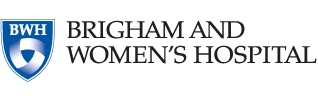Safety Study of Sirolimus and Hydroxychloroquine in Women With Lymphangioleiomyomatosis
| Status: | Completed |
|---|---|
| Conditions: | Lymphoma, Endocrine |
| Therapuetic Areas: | Endocrinology, Oncology |
| Healthy: | No |
| Age Range: | 18 - 85 |
| Updated: | 10/13/2018 |
| Start Date: | September 2012 |
| End Date: | August 2015 |
Targeting Autophagy for the Treatment of TSC and LAM: a Phase I Trial of Hydroxychloroquine and Sirolimus
Specific Aim 1: To investigate whether, in Lymphangioleiomyomatosis (LAM) patients, the
combination of sirolimus and hydroxychloroquine is safe and well tolerated
Specific Aim 2: To investigate whether, in LAM patients, 6 months of combination therapy with
sirolimus and hydroxychloroquine results in improvement of indicators of disease, and whether
the gains are sustained after stopping therapy.
Specific Aim 3: To investigate the potential role of a LAM-specific peripheral blood
signature to predict rates of disease progression and determine responsiveness to combination
therapy.
This will be a phase I dose escalation study of the combination of sirolimus (2 mg adjusted
to keep trough levels between 5-15 ng/ml) and hydroxychloroquine (200 mg or 400 mg) taken
orally daily. Up to 18 adult women with LAM will be enrolled.
combination of sirolimus and hydroxychloroquine is safe and well tolerated
Specific Aim 2: To investigate whether, in LAM patients, 6 months of combination therapy with
sirolimus and hydroxychloroquine results in improvement of indicators of disease, and whether
the gains are sustained after stopping therapy.
Specific Aim 3: To investigate the potential role of a LAM-specific peripheral blood
signature to predict rates of disease progression and determine responsiveness to combination
therapy.
This will be a phase I dose escalation study of the combination of sirolimus (2 mg adjusted
to keep trough levels between 5-15 ng/ml) and hydroxychloroquine (200 mg or 400 mg) taken
orally daily. Up to 18 adult women with LAM will be enrolled.
This will be a phase I dose escalation study of the combination of sirolimus (2 mg adjusted
to keep trough levels between 5-15 ng/ml) and hydroxychloroquine (200 mg or 400 mg) taken
orally daily for 6 months. The study is to be conducted at 2 sites. Up to 18 adult women with
LAM will be enrolled, and each recruiting site will recruit between 8-12 subjects. The
protocol will use the following eligibility criteria.
to keep trough levels between 5-15 ng/ml) and hydroxychloroquine (200 mg or 400 mg) taken
orally daily for 6 months. The study is to be conducted at 2 sites. Up to 18 adult women with
LAM will be enrolled, and each recruiting site will recruit between 8-12 subjects. The
protocol will use the following eligibility criteria.
Inclusion Criteria:
- Female age 18 or older
- Ability to give informed consent
- Diagnosis of LAM as defined as typical cystic change on CT plus:
- biopsy or cytology of any tissue demonstrating LAM
- angiomyolipoma, chylothorax, lymphangioleiomyoma, or tuberous sclerosis
- serum VEGFD greater or equal to 800pg/ml
- Post-bronchodilator FEV1 equal or less than 80% of predicted or DLCO equal equal or
less than 70% of predicted, or RV > 120% of predicted at baseline
- Women of childbearing potential must agree to use 2 forms of barrier contraception
during and for 8 weeks after the last dose of medication.
Exclusion Criteria:
- History of intolerance of mTOR inhibitors
- History of intolerance to hydroxychloroquine
- History of severe psoriasis
- History of porphyria cutanea tarda
- Uncontrolled intercurrent illness
- Pregnant, breast feeding, or plan to become pregnant in the next year
- Inadequate contraception
- Significant hematological or hepatic abnormalities
- Use of an investigational drug within 30 days of study start
- Inability to attend scheduled clinic visits
- Inability to perform PFTs
- Creatinine > 2.5mg/dL
- Recent pneumothorax within 8 weeks of screening
- History of malignancy in the last 2 years other than basal cell skin cancer
- Use of estrogen containing medication within 30 days of screening
- Abnormal G6PD levels at baseline
- Preexisting maculopathy or retinopathy
- Preexisting myopathy
- Currently taking doxycycline, metformin, lupron, simvastatin
- Unable to undergo CT or MRI
- History of seizure within last year
- Hepatitis B, C, HIV positive serology
- Use of alternative medical therapies for LAM for at least 6 weeks prior to study
participation
- History of myocardial infarct, angina, or stroke related to atherosclerosis
- History of cardiomyopathy
- Previous lung transplant
- Surgery (involving entry into a body cavity or requiring 3 or more stitches) within 2
months of initiation of study drug
- Uncontrolled cholesterol > 350mg/dL, triglycerides > 400mg/dL
We found this trial at
1
site
Brigham and Women's Hosp Boston’s Brigham and Women’s Hospital (BWH) is an international leader in...
Click here to add this to my saved trials
